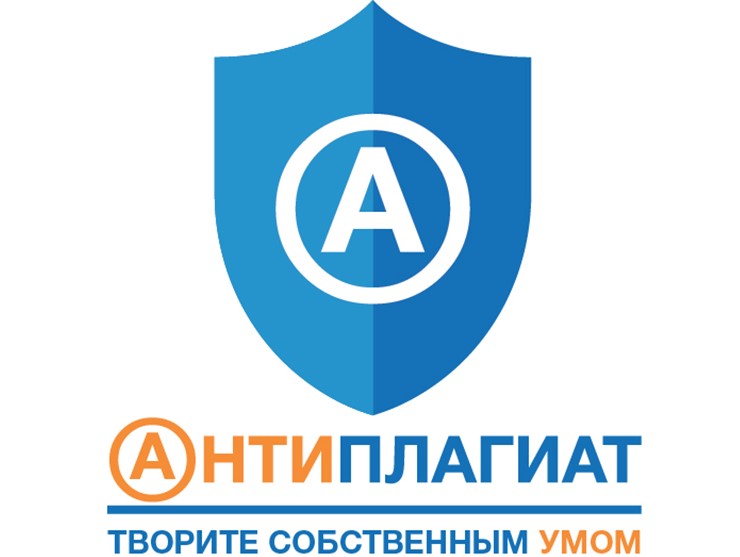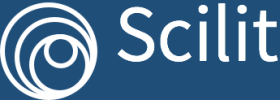Authors Guidelines
Author Guidelines
Articles are published in Russian and English.
The Editorial Board accepts manuscripts in accordance with the following main topics:
1. Theoretical and Methodological Problems of Archaeology
2. Material Study in Archaeology
3. Methods in Archaeological Research
4. Foreign Archaeology
5. Social Reconstructions in Archaeology
6. History of Archaeology
7. New Archaeological Discoveries in Russia
8. Museum Collections
In addition, the publication is made of analytical reviews, reviews, chronicles, reports, bibliographic information, information about personalities and other scientific works. All of them necessarily undergo an independent reviewing (see Review Policy). If necessary, additional sections are formed, subject issues are possible.
The Editorial Board draws the authors' attention to the importance of complying with the mandatory requirements for the publication.
The length of the manuscript is up to 1 printed sheet (40 thousand characters with spaces). In exceptional cases, the editorial board accepts longer articles (up to 1.5-2 pp.) if they contain significant results recognized by the scientific community. The article should be logically structured. An exemplary layout of the article should look like this (see sample below):
- indication of all authors (initials, surnames);
- the author’s/authors’ workplace (affiliation), the city and country of each author, using the appropriate numbering of positions if necessary (for the same data the same figure is indicated; for several affiliations, a consecutive set of numerical indications is indicated);
- the title of the article in Russian with the indication (if there is one) to the grant, program and other support;
- summary (abstract) in Russian with a summary of the work (the length should be at least 1000 characters without spaces; the abstract is an independent and original part of the publication; it should not use proposals identical to those that are in the main content of the work);
- a list of keywords or phrases in Russian (at least five and not more than ten);
- DOI (international index is assigned in the editorial office of the journal);
- a brief introduction (with the formulation of the main (main) publication task);
- materials and methods;
- the results obtained and their discussion (analysis);
- conclusion;
- acknowledgement;
- references (made in accordance with GOST R 7.0.5-2008, National Standard of the Russian Federation, System of Standards for Information, Library and Publishing, Bibliographic Reference: General Requirements and Rules for Compilation), taking into account new recommendations; it is necessary to look through the samples of registration in the previous issue of the journal);
- transliteration of used literature from Cyrillic to Latin script (free program for automatic translation translit: http://translit.net/), translation of titles is provided by the English speaking editor of the journal);
- indication of all authors (initials, surname) in English;
- the authors’ place of work (affiliation), city and country of each author in English;
- summary (abstract) with a summary of the work in English (quality translation of the Russian version);
- list of keywords in English (quality translation of the Russian version).
If an article is submitted in English, the information about the author (authors), their affiliations, summaries and keywords in Russian is given at the end of the article.
Each author is fully responsible for the content of the article and illustrative material, as well as for the accuracy of the data given in the References.
All text materials must be provided in Word format. Illustrations should be of a good quality and should not exceed the B5 format, taking into account the margins (no more than 200х135 mm). Each illustration should have a separate numbering and caption. In the text, references to them are given sequentially (examples of references to drawings and image positions are as follows: (Figure 1, Figure 2-5, Figure 6.-3, Figures 7-7-15: a, d)). Graphic illustrations are accepted in tif format (resolution not less than 300 dpi) or jpg. Charts and diagrams are in black and white. The article may be sent with no more than four quality photographs that will be placed inside the article with the corresponding caption. All used tables should have a separate numbering with references in the text (for example: (Table 1)). Each table must have its own name.
The captions and table names are placed in the text where they are supposed to be displayed. All illustrations and tables, as well as the article itself, a list of abbreviations and information about the authors are enclosed in separate files. In the title of each file it is necessary to indicate the surname of the first author with the following decoding, for example: Ivanov_statya. doc; Ivanov_Fig01.tif; Ivanov_Table01; Ivanov_abbreviation. doc; Ivanov_information. doc).
Bibliographic references to publications in the text are enclosed in square brackets, with the surname of one or the first author, year of publication, page, figure, table (for example: [Potapov, 1961, p. 5, Fig. 2.-8; Shishkin et al. ., 2011, pp. 143-145, Table 2.] Bibliographic description of the publication includes: the surnames and initials of the authors (all, regardless of their number), the full headline of the work, as well as journal where it was published (for articles), the city, the name of the publishing house (in the absence - the name of the issuing organization), the year of publication, volume (for multivolume editions), number, issue (for periodicals), volume of publication (number of pages for monographs, first and last pages for articles). References to the archive documents are made in accordance with GOST R 7.0.5-2008 in the form of a footnote within the text, for example: [RL of the National Library of Russia, F. 416. Op 1. 1. D. 26. L. 1, 2, Arch.S.H. 1. Op. 1 1927/1928. D. 563. L. 28-31].
Sample for the article:
UDC 903.23
A.A. Tishkin1, S.P. Grushin1, C.B. Munkhbayar2
1Altaisky State University, Barnaul, Russia;
2Khovd State University, Khovd, Mongolia
STONE VESSELS FROM THE EARLY BRONZE SITES OF THE BUYANT VALLEY (Mongolian Altai)
Joint research conducted for several years by employees of Altai State University (Barnaul, Russia) and Khovd State University (Hovd, Mongolia) in Western Mongolia made it possible to record bright burial complexes of the Bronze Age. Important results were obtained in the study of various archaeological sites in the Khovd Aimak of Mongolia. The article gives a description of stone vessels from the monuments of early bronze, discovered and excavated in the Buyant valley near the town of Khovd. This territory is connected with the eastern spurs of the Mongolian Altai. The finds come from funerary objects. The analysis of the obtained materials and the results of radiocarbon dating allowed the cultural-chronological attribution of the archaeological sites studied, as well as the reconstruction of some elements of the technology for the production of stone tanks. The territorial distribution of similar findings made it possible to identify the areas of existence of the traditions of making and using vessels made of stones. The structural features of the investigated funerary structures and a few ware complexes have correspondences in the materials of Xinjiang and adjacent regions, dated by early bronze and united in the culture of Cherokek / community. In addition, there are similarities with other archaeological evidence from Kazakhstan and southern Siberia.
Key words: Mongolian Altai, early Bronze, funeral constructions, radiocarbon dating, stone vessels.
DOI:
Introduction
Text, Text, Text, Text, Text, Text, Text, Text, Text, Text, Text, Text, Text, Text, Text, Text, Text, Text, Text, Text, Text, Text, Text, Text, Text, Text, Text, text, text, text, text, text, text, text, text, text, text, text, text, text, text, text, text, text, text, text, text, text, text, text, text, text, text, text, text, text, text, text, text, text, text, text, text, text, text, text, text.
and so on
Bibliographic List
(in alphabetical order without numbering)
References
(in a similar sequence with the Bibliographic List)
Монография:
Бернштам А.Н. Историко-археологические очерки Центрального Тянь-Шаня и Памиро-Алая. М. ; Л. : Изд-во АН СССР, 1952. 346 с.
Статья в сборнике:
Войтов В.Е. Могильники Каракорума (по материалам работ 1976–1981 гг.) // Археологические, этнографические и антропологические исследования в Монголии. Новосибирск : Наука, 1990. С. 132–149.
Статья в ученых записках (ученых трудах):
Генинг В.Ф. Хронология поясной гарнитуры I тыс. н.э. (по материалам могильников Прикамья) // КСИА. 1979. Вып. 158. С. 96–106.
Статья в журнале:
Кубарев В.Д. Древние зеркала Алтая // Археология, этнография и антропология Евразии. 2002. №3. С. 63–77.
Тишкин А.А., Горбунов В.В., Серегин Н.Н. Тюркские оградки археологического памятника Баян булаг-II в Монгольском Алтае: результаты исследований и комплексного анализа // Вестник Томского государственного университета. 2017. №424. С. 136–144 DOI 10.17223/15617793/424/19.
Tishkin A.A., Frolov Y.V. Bronze Age Axes from the Forest-Steppe Altai // Archaeology, Ethnology & Anthropology of Eurasia. 45/2 (2017). Р. 87–96 DOI: 10.17746/1563-0110.2017.45.2.087-096
Samples of Bibliographic Description
(If there is a DOI (Digital Object Identifier) for the source being quoted, it must be indicated at the end of the description in the following form: DOI: prefix / suffix (for example: DOI: 10.14258 / izvasu (2016) 1.1-01), references to unpublished works are not are allowed).
Monograph:
Bernshtam A.N. Istoriko-arkheologicheskie ocherki Tsentral'nogo Tyan'-Shanya i Pamiro-Alaya [Historical and Archaeological Essays of the Central Tien Shan and Pamir-Alai]. M. ; L. : Izd-vo AN SSSR, 1952. 346 p.
Article in the collection:
Voytov V.E. Mogil'niki Karakoruma (po materialam rabot 1976–1981 gg.)
[Karakorum Burial Grounds (based on the works of 1976-1981)]. Arkheologicheskie, etnograficheskie i antropologicheskie issledovaniya v Mongolii [Archaeological, Ethnographic and Anthropological Studies in Mongolia]. Novosibirsk : Nauka, 1990. Pp. 132–149.
Article in the Scientific Notes (Scientific Works):
Gening V.F. Khronologiya poyasnoy garnitury I tys. n.e. (po materialam mogil'nikov Prikam'ya) [Chronology of the Belt Set of the 1st Thousand AD (based on materials from the burial grounds of Prikamye)]. KSIA. 1979. Issue 158. Pp. 96–106.
Journal Article:
Kubarev V.D. Drevnie zerkala Altaya [Ancient Mirrors of Altai]. Arkheologiya, etnografiya i antropologiya Evrazii [Archaeology, Ethnography and Anthropology of Eurasia]. 2002. №3. Pp. 63–77.
Tishkin A.A., Gorbunov V.V., Seregin N.N. Tyurkskie ogradki arkheologicheskogo pamyatnika Bayan bulag-II v Mongol'skom Altae: rezul'taty issledovaniy i kompleksnogo analiza [Türkic Fences of the Bayan Bulag-II Archaeological Site in Mongolian Altai: the Results of Research and Comprehensive Analysis]. Vestnik Tomskogo gosudarstvennogo universiteta [Bulletin of Tomsk State University]. 2017. №424. S. 136–144 DOI 10.17223/15617793/424/19.
Tishkin A. A., Frolov Y.V. Bronze Age Axes from the Forest-Steppe Altai // Archaeology, Ethnology & Anthropology of Eurasia. 45/2 (2017). Pp. 87-96 DOI: 10.17746 / 1563-0110.2017.45.2.087-096
Synopsis:
Savinov D.G. Formirovanie i razvitie rannesrednevekovykh arkheologicheskikh kul'tur v Yuzhnoy Sibiri : Avtoref. dis. … d-ra ist. Nauk [Formation and Development of Early Medieval Archaeological Cultures in Southern Siberia: Synopsis of the dis. ... Dr. Hist. Sciences]. Novosibirsk, 1987. 54 p.
The full version of the complete article is sent by e-mail to the addresses indicated below no later than January 15 (for the first issue of each year), not later than March 15 (for the second issue), no later than June 15 (for the third issue) and no later than September 15 (for the fourth issue). Within two months after the article is received, the editorial board is obliged to organize a compulsory independent peer review of the article, and then notify the author (s) of the conclusions made. If the decision on the whole is positive, but there are remarks, then the author (s) is given a month for the completion of the manuscript. After that, the entire completed electronic version of the article is sent to the editorial board, as well as the letter of consent signed by each author and acknowledgment for the publication of this work.
The term of publication starts with the receipt of the article.
The authors of the articles also report the following data, which are published at the end of each issue of the journal: Surname, name, patronymic (in full), academic degree and rank, place of work and position, postal address (with the index), contact phone number, e-mail address.
Please send articles and materials at the same time to the following e-mail addresses: tishkin210@mail.ru (Alexey Alexeyevich Tishkin - editor-in-chief); kuzmar@hist.asu.ru (Kuzevanova Marina Yurievna - technical secretary).







2.jpg)




